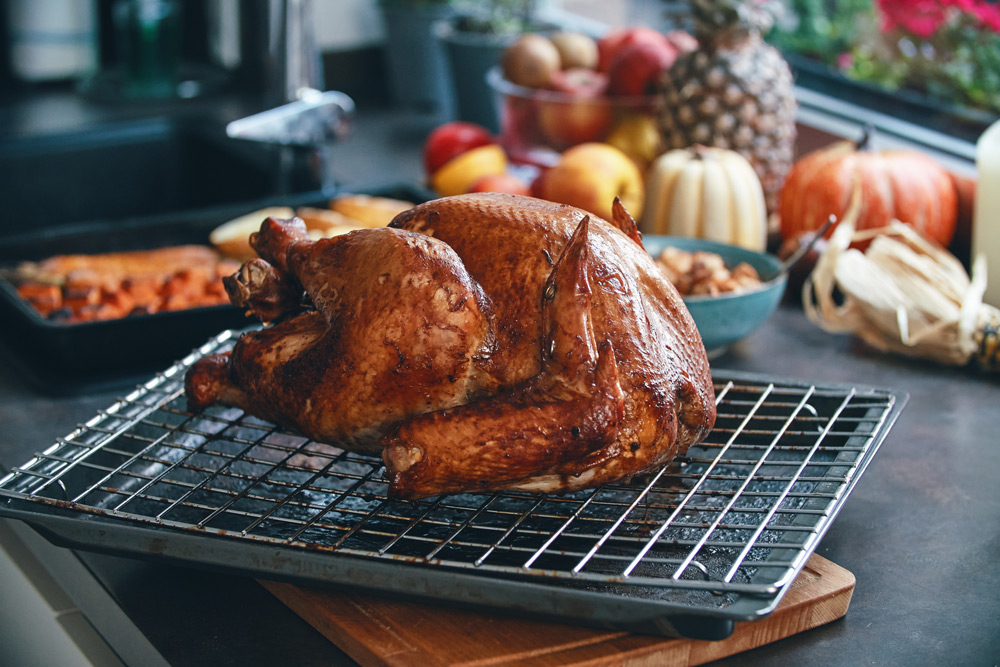Safety Guidelines for Cooking Your Thanksgiving Turkey
The U.S. Department of Agriculture (USDA) estimates more than 46 million turkeys are consumed on Thanksgiving each year — that’s a lot of turkeys!
If you’re tasked with preparing your Thanksgiving feast, make sure you’re following proper food safety guidelines. You don’t want to end up thankful for the emergency room this holiday.
It’s best to start your turkey preparation by thawing your bird for at least 24 hours for every four to five pounds it weighs. If you have a 16-pound turkey, it will take roughly four days to thaw. It can remain in the fridge for an additional two days and still be considered safe.
It’s not as common, but you can cook a frozen turkey safely. You’ll want to increase its cooking time by 50 percent.
When it’s time to get your turkey ready for the oven, don’t not wash your turkey. Washing it will only spread germs and bacteria increasing the risk for cross-contamination.
Some people prefer to brine their birds. You can safely do this by using a large container made of food-grade plastic, stainless steel or glass. Make sure it’s covered and set on the lowest shelf in your refrigerator, which should be kept at 40 degrees Fahrenheit or less. Store the container in a spot where it won't leak onto other food. Brine the turkey for no more than two days.
It’s important to practice proper handwashing techniques using guidelines from the Centers for Disease Control and Prevention (CDC) every time you’ve had contact with raw meat or contaminated materials.
Disposable latex or nitrile gloves are another option. When using gloves always change to a new clean pair before moving to the next step in the prep process.
If you’re preparing stuffing with your bird, it’s best to cook it outside of the turkey to avoid cross-contamination.
It’s generally recommended to cook your turkey anywhere from 15 to 20 minutes per pound at a temperature of 375 degrees.
When the turkey is ready to come out of the oven, there are three places you should check the temp with a meat thermometer. Those places include the innermost part of the thigh, the innermost part of the wing and the thickest part of the turkey breast. All three of these areas should be at least 165 degrees.
Refrigerate your turkey within two hours of cooking and keep it in the fridge for up to four days. Leftovers can be stored in the freezer for three to four months.
Salmonella illness will cause people to experience diarrhea, abdominal cramps and fever within eight to 72 hours after consuming the contaminated food. Additional symptoms may include chills, headache, nausea and vomiting. Symptoms will usually clear up on their own within four to seven days. If you do become sick, it’s important to stay hydrated.
Following these tips will help keep you and your guests happy and healthy this holiday.
